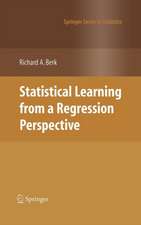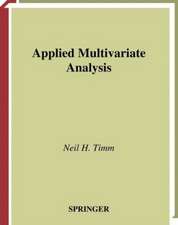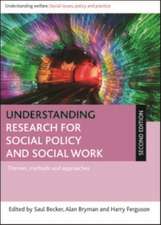Participatory Sensing, Opinions and Collective Awareness: Understanding Complex Systems
Editat de Vittorio Loreto, Muki Haklay, Andreas Hotho, Vito D.P. Servedio, Gerd Stumme, Jan Theunis, Francesca Triaen Limba Engleză Hardback – 19 aug 2016
There is overwhelming evidence that the currentorganisation of our economies and societies is seriously damaging biologicalecosystems and human living conditions in the short term, with potentiallycatastrophic effects in the long term. The need to re-organise the dailyactivities with the greatest impact – energy consumption, transport, housing –towards a more efficient and sustainable development model has recently beenraised in the public debate on several global, environmental issues. Above all,this requires the mismatch between global, societal and individual needs to beaddressed. Recent advancesin Information and Communication Technologies (ICT)can trigger important transitions at the individual and collective level toachieve this aim.
Based on the findings of the collaborative researchnetwork EveryAware the following developments among the emerging ICTtechnologies are discussed in depth in this volume:
• Participatory sensing – where ICT development ispushed to the level where it can supportinformed action at the hyperlocal scale, providing capabilities forenvironmental monitoring, data aggregation and mining, as well as informationpresentation and sharing.
• Web gaming, social computing and internet-mediatedcollaboration – where the Web will continue to acquire the status of aninfrastructure for social computing, allowing users’ cognitive abilities to becoordinated in online communities, and steering the collective action towardspredefined goals.
• Collective awareness and decision-making – where theaccess to both personal and community data, collected by users, processed withsuitable analysis tools, and re-presented in an appropriate format by usablecommunication interfaces leads to a bottom-up development of collective socialstrategies.
| Toate formatele și edițiile | Preț | Express |
|---|---|---|
| Paperback (1) | 647.27 lei 6-8 săpt. | |
| Springer International Publishing – 22 apr 2018 | 647.27 lei 6-8 săpt. | |
| Hardback (1) | 653.65 lei 6-8 săpt. | |
| Springer International Publishing – 19 aug 2016 | 653.65 lei 6-8 săpt. |
Din seria Understanding Complex Systems
- 18%
 Preț: 1112.30 lei
Preț: 1112.30 lei -
 Preț: 439.25 lei
Preț: 439.25 lei - 18%
 Preț: 1119.38 lei
Preț: 1119.38 lei - 15%
 Preț: 401.82 lei
Preț: 401.82 lei - 18%
 Preț: 1247.26 lei
Preț: 1247.26 lei - 15%
 Preț: 641.20 lei
Preț: 641.20 lei - 15%
 Preț: 642.68 lei
Preț: 642.68 lei - 15%
 Preț: 651.51 lei
Preț: 651.51 lei - 18%
 Preț: 946.55 lei
Preț: 946.55 lei - 18%
 Preț: 947.98 lei
Preț: 947.98 lei - 20%
 Preț: 650.27 lei
Preț: 650.27 lei - 18%
 Preț: 952.09 lei
Preț: 952.09 lei - 18%
 Preț: 957.13 lei
Preț: 957.13 lei - 18%
 Preț: 943.88 lei
Preț: 943.88 lei -
 Preț: 398.35 lei
Preț: 398.35 lei - 5%
 Preț: 1417.54 lei
Preț: 1417.54 lei - 15%
 Preț: 648.42 lei
Preț: 648.42 lei -
 Preț: 387.75 lei
Preț: 387.75 lei - 18%
 Preț: 1133.76 lei
Preț: 1133.76 lei - 18%
 Preț: 948.16 lei
Preț: 948.16 lei - 20%
 Preț: 655.85 lei
Preț: 655.85 lei - 18%
 Preț: 1113.09 lei
Preț: 1113.09 lei - 20%
 Preț: 655.53 lei
Preț: 655.53 lei - 15%
 Preț: 653.00 lei
Preț: 653.00 lei - 18%
 Preț: 1332.92 lei
Preț: 1332.92 lei - 18%
 Preț: 1010.48 lei
Preț: 1010.48 lei - 18%
 Preț: 955.56 lei
Preț: 955.56 lei -
 Preț: 384.22 lei
Preț: 384.22 lei - 18%
 Preț: 950.66 lei
Preț: 950.66 lei - 15%
 Preț: 638.43 lei
Preț: 638.43 lei - 15%
 Preț: 644.49 lei
Preț: 644.49 lei - 15%
 Preț: 647.40 lei
Preț: 647.40 lei - 15%
 Preț: 649.06 lei
Preț: 649.06 lei - 15%
 Preț: 639.25 lei
Preț: 639.25 lei - 15%
 Preț: 643.65 lei
Preț: 643.65 lei - 18%
 Preț: 960.78 lei
Preț: 960.78 lei - 15%
 Preț: 649.87 lei
Preț: 649.87 lei - 15%
 Preț: 645.47 lei
Preț: 645.47 lei
Preț: 653.65 lei
Preț vechi: 769.00 lei
-15% Nou
Puncte Express: 980
Preț estimativ în valută:
125.07€ • 130.94$ • 103.49£
125.07€ • 130.94$ • 103.49£
Carte tipărită la comandă
Livrare economică 05-19 aprilie
Preluare comenzi: 021 569.72.76
Specificații
ISBN-13: 9783319256566
ISBN-10: 3319256564
Pagini: 350
Ilustrații: XXVII, 405 p. 83 illus., 70 illus. in color.
Dimensiuni: 155 x 235 x 24 mm
Greutate: 0.79 kg
Ediția:1st ed. 2017
Editura: Springer International Publishing
Colecția Springer
Seria Understanding Complex Systems
Locul publicării:Cham, Switzerland
ISBN-10: 3319256564
Pagini: 350
Ilustrații: XXVII, 405 p. 83 illus., 70 illus. in color.
Dimensiuni: 155 x 235 x 24 mm
Greutate: 0.79 kg
Ediția:1st ed. 2017
Editura: Springer International Publishing
Colecția Springer
Seria Understanding Complex Systems
Locul publicării:Cham, Switzerland
Cuprins
Part I New Sensing Technologies for Societies and Environment.- Part II Citizen Science, Participatory Sensing and Social Computation.- Part III Collective Awareness, Learning and Decision Making.- Appendix: Software and Hardware Tools.
Textul de pe ultima copertă
This book introduces and reviews recent advances in the field in a comprehensive and non-technical way by focusing on the potential of emerging citizen-science and social-computation frameworks, coupled with the latest theoretical and modeling tools developed by physicists, mathematicians, computer and social scientists to analyse, interpret and visualize complex data sets.
There is overwhelming evidence that the current organisation of our economies and societies is seriously damaging biological ecosystems and human living conditions in the short term, with potentially catastrophic effects in the long term. The need to re-organise the daily activities with the greatest impact – energy consumption, transport, housing – towards a more efficient and sustainable development model has recently been raised in the public debate on several global, environmental issues. Above all, this requires the mismatch between global, societal and individual needs to be addressed. Recent advances in Information and Communication Technologies (ICT) can trigger important transitions at the individual and collective level to achieve this aim.
Based on the findings of the collaborative research network EveryAware the following developments among the emerging ICT technologies are discussed in depth in this volume:
• Participatory sensing – where ICT development is pushed to the level where it can support informed action at the hyperlocal scale, providing capabilities for environmental monitoring, data aggregation and mining, as well as information presentation and sharing.
• Web gaming, social computing and internet-mediated collaboration – where the Web will continue to acquire the status of an infrastructure for social computing, allowing users’ cognitive abilities to be coordinated in online communities, and steering the collective action towards predefined goals.
• Collective awareness and decision-making – where the access to both personal and community data, collected by users, processed withsuitable analysis tools, and re-presented in an appropriate format by usablecommunication interfaces leads to a bottom-up development of collective socialstrategies.
There is overwhelming evidence that the current organisation of our economies and societies is seriously damaging biological ecosystems and human living conditions in the short term, with potentially catastrophic effects in the long term. The need to re-organise the daily activities with the greatest impact – energy consumption, transport, housing – towards a more efficient and sustainable development model has recently been raised in the public debate on several global, environmental issues. Above all, this requires the mismatch between global, societal and individual needs to be addressed. Recent advances in Information and Communication Technologies (ICT) can trigger important transitions at the individual and collective level to achieve this aim.
Based on the findings of the collaborative research network EveryAware the following developments among the emerging ICT technologies are discussed in depth in this volume:
• Participatory sensing – where ICT development is pushed to the level where it can support informed action at the hyperlocal scale, providing capabilities for environmental monitoring, data aggregation and mining, as well as information presentation and sharing.
• Web gaming, social computing and internet-mediated collaboration – where the Web will continue to acquire the status of an infrastructure for social computing, allowing users’ cognitive abilities to be coordinated in online communities, and steering the collective action towards predefined goals.
• Collective awareness and decision-making – where the access to both personal and community data, collected by users, processed withsuitable analysis tools, and re-presented in an appropriate format by usablecommunication interfaces leads to a bottom-up development of collective socialstrategies.
Caracteristici
Authored and edited by leading researchers in the field Comprehensive and non-technical introduction and review Contains an appendix detailed the relevant hard- and software tools Includes supplementary material: sn.pub/extras













